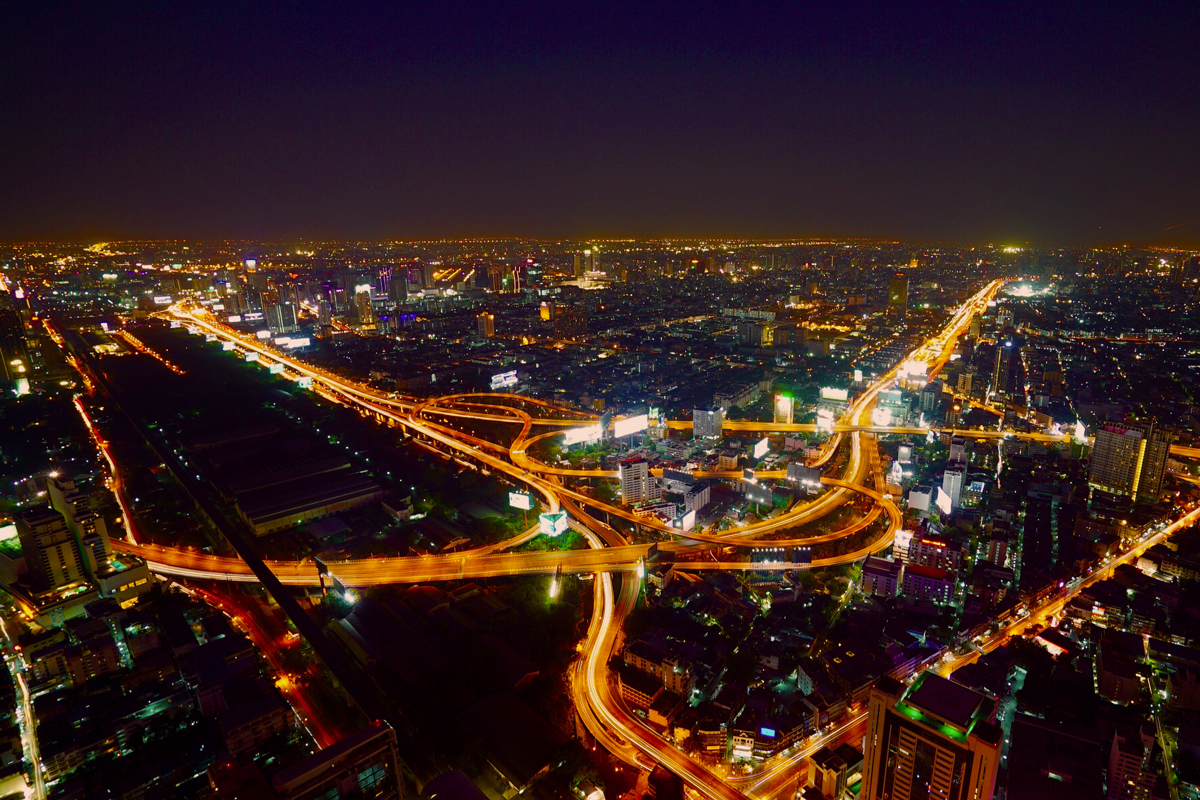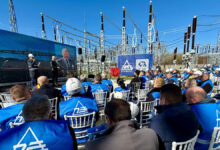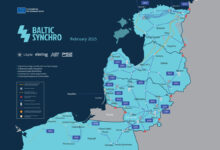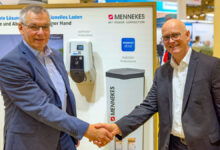Decade of Smart

Global Smart Cities spending is projected to rise from USD 14.9 billion in 2015 to USD 34.4 billion in 2020.
The concept of ‘smart cities’ was conceived as a part of IBMs’ Smarter Planet initiative in 2008. In the midst of a global economic crisis, IBM began a conversation with the world about the promise of a smarter planet and a new strategic agenda for progress and growth. A year later IBM launched its Smarter Cities campaign, a comprehensive approach to helping cities run more efficiently, save money and resources, and improve the quality of life. On January 12, 2010, IBM Chairman and CEO Sam Palmisano kicked off the new year and decade with a speech at Chatham House in London, England called ‘The Decade of Smart,’ in which he highlighted dozens of initiatives. “The questions we are hearing are no longer about whether the technology to build a smarter planet is real,” he said. “Now, there is an enormous hunger to learn how to get smarter operations up and running.”
Propelling cities and communities to the next generation
According to a study by Roland Berger, the smartest cities in 2017 were Vienna (1st place), Chicago (2nd place), Singapore (3rd place), London (4th place), Santander (5th place) and New York (6th place). As far as the ranking is concerned, in terms of the type of programs developed, the top of smart cities includes:
- Singapore, Lyon, San Francisco – Mobility
- Copenhagen, Santander, Singapore – Energy and Environment
- Chicago, Vienna, Singapore – Education
- Singapore, Vienna, Aarhus – Health
The capital of Austria, the city of Vienna can boast that it is the smartest city in the world, just seven years after the application of this concept. For the Capital of Waltz, this concept has brought together six themes of development: population, environment, administration, economy, energy and mobility, and the main goals pursued were resource conservation, quality of life and innovation. The results of this city transformation program are visible today everywhere. The city has one of the best performing public transport networks: 5 subway lines with 104 stations over a distance of 79 kilometres, 29 tram routes and 115 bus routes and investments in city development will continue at a sustained pace in the years to come. The city has an application that provides real-time information about the schedule of each route, the hours of departure of all trams and buses on all lines, tickets can be purchased directly from the application, information about city attractions, maps. The city has also developed many bicycle paths, even making it possible to make a bicycle tour of the city. The 120 CityBike terminals provide 1,500 bicycles and, in addition, there is an application that provides information about stations and shops where bicycles can be bought or rented. Vienna has developed in the recent years the car-free concept. It is about residential areas where car access is prohibited.
170 smart projects in a single city
The Amsterdam Smart City initiative was launched in 2009, the city now being one of the most developed from this point of view, with over 170 Smart City projects. These include smart lighting, which adjusts the brightness of street lamps depending on pedestrian traffic, an application that allows residents to rent their parking space and the generated data can then be used by the city to determine the parking demand and traffic flows in Amsterdam, a number of homes have been provided with smart energy meters, traffic is monitored, and traffic information is provided to users to choose the best routes.
Development centre in Budapest
Deutsche Telekom opened at the end of last year in Budapest a research centre to accelerate the development of smart cities in Europe and has concluded a partnership with Cisco for a new application intended for municipal authorities providing Wi-Fi. The new European Smart Solutions Centre (ESC) in Hungary will bring together the expertise and activities of the German telecom operator. The centre will provide a wide range of solutions, as well as consulting to help the cities use their urban development funds.
EIP-SCC
The European Innovation Partnership on Smart Cities and Communities (EIP-SCC) is a major market changing undertaking supported by the European Commission. It brings together cities, industry and citizens to improve urban life through more sustainable integrated solutions. This includes applied innovation, better planning, a more participatory approach, higher energy efficiency, better transport solutions, intelligent use of Information and Communication Technologies (ICT), etc.
The Smart City concept conquers Romania
Instant access to data on traffic, pollution, recycling, SMS parking payment, Wi-Fi in public transport etc. are just some of the facilities that make up the image of a smart city. Everything, at the distance of only a click on your computer’s mouse or a touch of your mobile phone screen. More and more cities from Romania have joined in the recent years the competition targeting the transformation into Smart City, and the results are already starting to show, even if in many cases we are talking only about pilot projects.
To apply this concept, the municipalities can also use non-reimbursable European funds, but it is all related to the preparation of projects, and in this chapter, we still have great shortcomings. There are various financing opportunities for the Romanian cities to implement smart urban projects. Thus, for the period 2014-2020, within the regional operational program, two billion euros were allocated for urban mobility, while almost EUR 1.2bn are provided for integrated and sustainable urban development, being about money directly managed by the county capital cities. Also, starting with 2014, through the main research and innovation program of the European Union, Horizon 2020, EUR 430 million have been allocated for projects within the initiative ‘Smart cities and communities’.
The Centenary year finds Alba Iulia Smart
One of the most ambitious projects for the transformation of a city into a Smart City belongs to Alba Iulia municipality. The project’s deadline is obviously this year, given that the Centenary of the Union will be celebrated here. This is the most complex project, companies being involved together with the municipality. The city already benefits from broadband internet, Wi-Fi (228 access points in the citadel and the city and 15 access points in public transportation) and LoRaWAN (network dedicated to objects connected to the Internet), smart public lighting (monitoring and control sensors for the lighting poles, on which new LEDs have also been installed). A ‘civil alert’ system has also been implemented, through which notifications and photos can be sent at any time, and within several seconds they are already on the table of municipality’s dispatching centre. The soft-school education process hasn’t been left out of this project, which means that in several high schools of the city a Smart solution is implemented, with digital educational content, digital class book, as well as free Internet, with filtered web traffic. In terms of tourism, there is a mobile application – ‘e-albaiulia’, which is a virtual guide for tourists coming to the city.
Park of the future in Bucharest
Tineretului Park, from the District 4 of the Capital, has been a road maker in terms of projects targeting Bucharest’s transformation into a city of the future. Here, Telekom Romania, together with other partners, have introduced smart parking solutions, free Wi-Fi, smart lighting, integrated on a dedicated Internet of Things platform.
Telekom has brought the smart street in Constanta
Telekom Romania has also started a pilot project in Constanta, together with its partner, ZTE, the solutions applied being subordinated to the smart street concept. Smart parking and lighting solutions, multifunctional lighting poles (with video surveillance, car charging station, environmental sensors, led display) and free Wi-Fi are the innovating ideas implemented in the area of the Sports Hall in the city.
Multifunctional street poles in Brasov
The project for the transformation of the city at the foot of Tampa Mountain into a smart one started in 2015. Works for the modernization of the public lighting system were completed last year in Brasov. The poles were provided with plugs for charging electric cars, as well as with devices allowing brightness adjustment. The investment amounted to RON 10mln, but the municipality will save RON 650,000 per year. The project also has a component targeting citizen safety, installing surveillance cameras and panic buttons.
Smart City pioneers in Timisoara
Timisoara is also adapting to the Smart City concept. In the central area the Internet is free of charge, as well as in many means of public transportation. The project, which started last year, is carried out by companies Continental and Orange.
Ambitious program in Oradea
The local authorities in Oradea have extremely ambitious plans, wishing to transform the city into the first real Smart City in Romania. The project targets several social areas, from administration, infrastructure, mobility, energy and business to housing, education, culture, medicine and computer security.
Silicon Valley expands to Cluj-Napoca
Cluj-Napoca is among the first cities that have noticed the advantages that implementing the Smart City concept brings for its inhabitants. Now in this city parking is paid through SMS, taxes are paid online, the urban planning certificate is also obtained online, and any dissatisfaction can be sent directly to the mayor through an application. The next step is installing on the streets special sensors to measure pollution and noise. In order to diminish pollution, the municipality has started a program for the acquisition of electric buses.
Ploiesti, citadel of the future
A pilot project has started in Ploiesti, born from the desire to ensure a higher quality of life for the entire community. The ambitious plan to regenerate the city aims to bring back to life, in a dynamic and updated formula, the industrial potential of the city. Known in the past century as the most important oil producer in Europe, the city of Ploiesti aims to re-become a major regional pole, by revitalizing the industrial sector and the subsequent areas. The municipality primarily plans to revive the traditional sectors and higher education, by establishing, together with the Petroleum-Gas University (UPG), a centre for research and innovation in renewable energy.
The projection of a desirable future towards 2030 also includes the main lines of action: accessing and implementing sources of European funding for research and innovation (particularly Horizon 2020); setting up, within UPG, new profile departments (water – hydraulic energy, potential osmotic power – geothermal and biomass energy), by attracting specialists from the country and abroad; the development of investments supported in pre-university education, especially on the component of vocational schools for the purpose of training specialists in the field of renewable energy; increasing economic competitiveness and community welfare through the development of business infrastructure, with a focus on capitalizing on local resources and creating industrial parks in areas near the city; the development of coherent environmental policies aimed at improving the quality of the environment, protecting human health, identifying solutions to reduce the effects of pollution, prudent and rational use of resources.
I believe that 100 years after the Great Union we do not need slogans and ceremonies without substance, but first of all we need action. I notice at the level of local governments the growing interest for a theme appropriate to the present, namely the smart development of our cities. It is a concept that has a huge potential to turn Romania into a prosperous country,” Romanian President Klaus Iohannis said during the event ‘Cities of Romania 100 years from the Great Union. A smart future for Ploiesti’, organized by Ploiesti Municipality in collaboration with the Petroleum-Gas University on 22 November 2017.
Top cities in Romania carrying out smart projects
Alba-Iulia
Companies involved: Orange, Siemens, Microsoft, Schreder, Direct One, Philips, Vegacomp Consulting
Number of projects: 60
Traffic monitoring system and other smart solutions; Air quality monitoring; Monitoring of water consumption and network losses; Securing internet access for all smart city components and monitoring the system through the Business Internet Security platform; Electric vehicle charging stations; Solution for analysing and reporting budget revenue; Public barometer solution (allows consultation of city residents on various topics); Integrating the Dispatch System with other mobile incident reporting solutions; Wi-Fi hotspots with secure internet access in public areas; LoRaWAN infrastructure through which applications and devices connected to the Internet will communicate; Digital class solution containing tablets, digital educational content, digital class book, secure Wi-Fi Internet access and filtered web traffic; An integrated tourist platform; Electric bike rental service; Online beacons for public transport; Video-Video Analytics Surveillance; Virtual tour of the city; Smart Parking; The Civic Alert solution – which helps residents alert the authorities on the problems identified in the city; City Analytics – through which the municipality can track the city’s pedestrian traffic trends, depending on the day’s weather or weather conditions, also identifying the most common routes
Cluj-Napoca
Companies involved: Evozon, Tpark, ZebraPay
Number of projects: 9
Smart Parking; Renewable Energy; Citizen-Municipality Relationship; Energy and Environment; Charging Stations for Electric Vehicles; Adaptive Traffic; My Cluj – the application of Cluj-Napoca Municipality for complaints
Bucharest
Companies involved: Enel (the first utility in the world to replace the traditional electromechanical meters with smart meters that make it possible to measure consumption in real time and manage contractual relationships remotely; this innovative tool is key to the development of smart grids, smart cities and electric mobility), I’Velo, Telekom, ZebraPay
Number of projects: 6
Smart Energy; Bike Sharing; Electric buses; IT&C; Self-service terminals; Charging stations for electric vehicles
Galati
Companies: UTI
Number of projects: 5
Intelligent Traffic Monitoring System; the ‘Knowledge based economy’ Project; Waste composting plant; Rehabilitation and extension of the sewerage network and modernization of the wastewater treatment plant; Collection and transport of municipal waste
Timisoara
Companies involved: ZTE, Orange, Continental, Aquatim, Tpark, ZebraPay
Number of projects: 4
Smart Parking; IT&C; Charging stations for electric vehicles; Remote reading meters
Brasov
Companies involved: Tpark, ZebraPay
Number of projects: 4
Smart Parking; Smart Lighting; Charging stations for electric vehicles; Smart crosswalk
Constanta
Companies involved: Telekom, ZTE, Tpark, ZebraPay
Number of projects: 3
Telekom Group has launched with China’s ZTE a smart-city project in Constanta; Smart Parking; Charging stations for electric vehicles
Iasi
Companies involved: UTI, ZebraPay
Number of projects: 3
Resita
Companies involved: Siemens, ELBA, Tpark, ZebraPay
Number of projects: 2
Smart traffic management; Smart lighting solutions
Arad
Companies involved: Digitax, Waze, Tpark
Number of projects: 1
A city 100% smart in 2020
Mobility; Charging stations for electric vehicles; Adaptive Traffic Management System
Enel, the digital transformation
Enel X, launched in London on 20 November 2017, is the new brand identity, designed by Wolff Olins, for the Global Business Line e-Solutions. The Global Business Line e-Solutions offers a series of integrated digital solutions linked to electric mobility in order to improve people’s lives and the environments in which we live.
Just like the four points on the letter X, the new brand has four fields of activity: e-City will develop sustainable and high tech solutions for the new smart cities, from street lighting and the illumination of artistic heritage sites to energy efficiency, security and fibre-optic connections; e-Home is for smart homes that are capable of saving increasing quantities of energy and offering greater comfort and wellbeing; e-Industries provides consultancy services, energy efficiency and distributed generation technology and the creation of off-grid and Demand Response solutions; e-Mobility will promote the spread of efficient electric mobility with recharging infrastructure, Vehicle to Grid (V2G) technology and second-life services for batteries.
“Enel X is ready to respond to the new requirements that come from the transition from a centralized energy model to one that is distributed. The X in the logo also symbolizes the embrace between the company and the customer,” Francesco Venturini, Head of Global Business Line e-Solutions, affirms.
MindSphere – Smart Data for Smart Cities
The future of smart cities will be shaped by the Internet of Things as a networking technology and by smart data as a resource for forecasting. For example, it will be possible to coordinate power generation and power demand more precisely than ever before. Such developments will make increasing decentralization manageable, merge the markets for heating and electricity, and integrate industrial facilities, buildings, and vehicles as energy suppliers – and allow citizens to evolve from consumers to active prosumers. One step in this direction is offered by MindSphere, an open, cloud-based IoT operating system from Siemens that offers both connectivity and a range of industrial applications so that any enterprise, regardless of industry or size, can begin analysing data to optimize its operations. As a first example, Siemens is working with Singapore to turn the city state into a smart nation. Singapore is the first country worldwide to implement MindSphere on a pilot basis to harvest information from its infrastructures. Siemens supports this process through the creation of a digital information hub, which entered service on July 11, 2017.
‘Current’ by GE
Powered by GE, Current is the digital engine for intelligent environments. A first-of-its-kind start-up within the walls of GE, Current blends advanced energy technologies like LED and solar with networked sensors and software to make commercial buildings and industrial facilities more energy efficient & productive. It combines GE’s capabilities in LED, solar, energy storage, electric vehicle infrastructures, and wireless controls into a sustainable energy ecosystem designed to help customers save money and put energy back into growing their businesses and cities.






